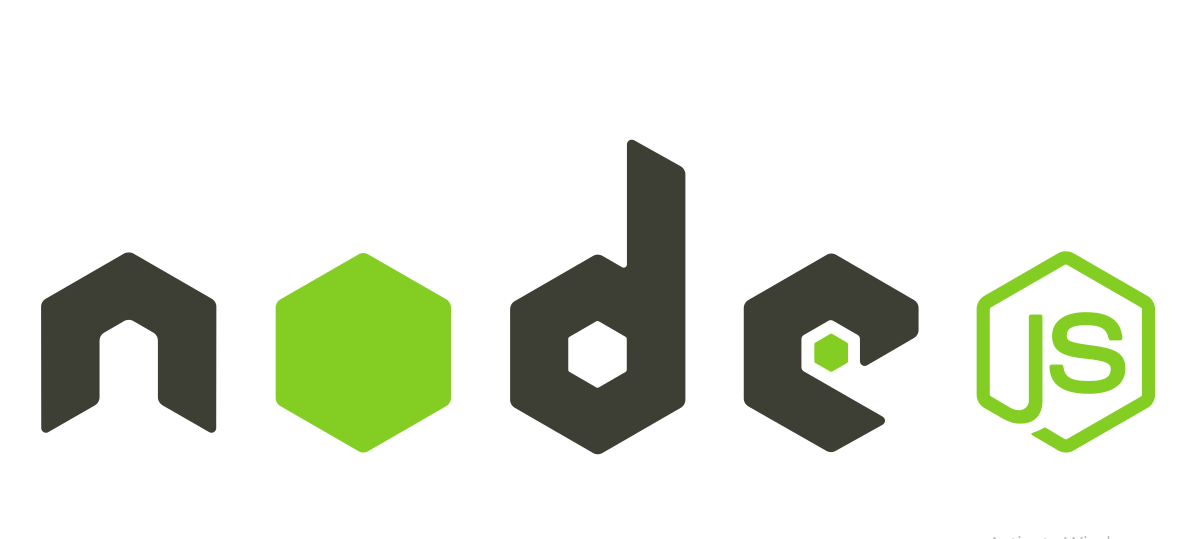Is Node.js Killing Python And PHP? (A Must Read For Developers)

Selecting the best technology stack, especially the backend technology that would run your entire web/mobile application, is a vital decision when designing application software. That’s not always easy because of the many options for the technology on the back end, with Node.js, PHP, and Python being the most common. The unique aspects of each of the three technologies make them stand out. Others claim that Node.js is replacing PHP and Python as the most popular backend programming languages chosen by most organizations in today’s highly disruptive technology world.
Despite the popularity of Node.js among developers, many are still weighing their options. To help you choose the best backend platform for your projects, we compared Node.js, PHP, and Python.
Backend Development Definition
Backend or server-side development of websites and apps refers to all the work done behind the scenes whenever a user interacts with a website. As a result, backend developers’ major responsibility is facilitating smooth data delivery to the end users. Developers specializing in the backend have extensive knowledge of the languages and frameworks used to create the underlying infrastructure. Identifying the best backend technology for your web development project is essential before you engage a backend engineer. Keep reading to get all the details!
What is Node.js?
 Node.js is a free and open-source framework for building applications that run JavaScript on the server. The extensive collection of JavaScript modules simplifies the web app creation process. Many developers like Node.JS over other JavaScript frameworks as it allows them to create the project’s server and client components in JavaScript. Node.js also features asynchronous server-side code execution. By executing code asynchronously, Node.js increases server performance and allows the simultaneous processing of more requests.
Node.js is a free and open-source framework for building applications that run JavaScript on the server. The extensive collection of JavaScript modules simplifies the web app creation process. Many developers like Node.JS over other JavaScript frameworks as it allows them to create the project’s server and client components in JavaScript. Node.js also features asynchronous server-side code execution. By executing code asynchronously, Node.js increases server performance and allows the simultaneous processing of more requests.
What is Python?
 Python is a general-purpose, object-oriented computer language that is used to make apps and websites, analyze data, and automate processes, among other things. Python is a language that is often used to make tools for machine learning. Python can also be used to do a lot of things in web creation, like do math, connect databases, send data, change URLs, and much more.
Python is a general-purpose, object-oriented computer language that is used to make apps and websites, analyze data, and automate processes, among other things. Python is a language that is often used to make tools for machine learning. Python can also be used to do a lot of things in web creation, like do math, connect databases, send data, change URLs, and much more.
What is PHP?
 Hypertext Preprocessor (PHP) is a widespread scripting language for web services. PHP is a widely used server-side programming language that is highly regarded and popular globally. It is also a commonly chosen alternative to Node.js. PHP is a versatile programming language that can be utilized in various domains due to its general-purpose nature. HTML incorporates PHP code that can be employed in various content management systems, sturdy frameworks, and themes.
Hypertext Preprocessor (PHP) is a widespread scripting language for web services. PHP is a widely used server-side programming language that is highly regarded and popular globally. It is also a commonly chosen alternative to Node.js. PHP is a versatile programming language that can be utilized in various domains due to its general-purpose nature. HTML incorporates PHP code that can be employed in various content management systems, sturdy frameworks, and themes.
What is the Impact of Node.js on Python and PHP?
Node.js has affected both Python and PHP. To begin, Node.js has simplified development by standardizing on a single language for both the client and server sides of an application’s infrastructure. This means that JavaScript may be used for both front-end and back-end development, eliminating the need for engineers to become fluent in several languages.
Because of its asynchronous design and its ability to process numerous requests all at once, Node.js is very quick. As a result, Node.js apps often load more quickly than their Python and PHP counterparts.
JavaScript has become one of the most popular programming languages among developers in recent years. Thus, more developers are familiar with Node.js than with other languages like Python or PHP.
Node.js, PHP, and Python: Features, Pros, and Cons
Common web backend technologies include Python, PHP, and Node.js. There are benefits and drawbacks to each framework. Let’s take a quick overview of each technology. Through this, you will better appreciate the fundamental distinctions between Node.js, PHP, and Python.
| Attributes | Node.js | PHP | Python |
| Type | JavaScript Runtime Environment | Programming Language | Programming Language |
| Architecture | MVC/MVP with a single-threaded event loop | MVC | Requires Support for Multithreading |
| Mistake Fixing | Challenging | A Little Difficult | Easy |
| Universality | Cross-platform, full-stack | Cross-platform, back end | Cross-platform, full-stack |
| Speed | Faster than PHP & Python | Faster than Python, Slower than Node.js | Average |
| Learning Curve Popularity | Simpler | Simpler | Simpler |
| Scalability | Easy | Easy | Easy |
| Community Support | Strong | Strong | Strong |
By comparing and contrasting the core components of the three technological stacks, you’ll be better able to tell them apart and settle on the best option for your projects. The distinguishing features of these three technological advancements are as follows:
Characteristics of Node.js
A few most important characteristics of Node.js are as follows:
- Only one thread can be active at a time in Node.js. Thanks to its Single Threaded Event architecture, it handles several user requests simultaneously.
- In addition to Windows desktop computers, Node.js runs smoothly on Unix, Linux, Mac OS X, and mobile devices.
- Node.js allows developers to write client-facing and server-side software in the same language.
- Node.js is a straightforward platform that facilitates rapid application creation and distribution.
- When it comes to scaling, Node.js has you covered.
PROS
- Since JavaScript has been around for a long time and is widely used in apps, a developer with experience will have a leg up while learning Node.js.
- Node.js is a fast JavaScript runtime that utilizes Google’s V8 engine. V8 reduces JavaScript execution time by compiling it into machine code.
- It facilitates application scalability.
- Node.js’s Web Sockets and non-blocking I/O make it an excellent choice for concurrent programs. Web sockets employ TCP, eliminating the need for HTTP’s extra overhead.
- With over 60000 modules and counting, NOP is powerful and lightning-fast package management.
CONS
- Constant updates to the application programming interface have broken backward compatibility.
- Has sparse resources for library use.
- To be successful in Node.js, you need to have an in-depth understanding of JavaScript, both conceptually and practically.
Some interesting Statistics
- Node.js is the sixth most popular programming language, per Statista.
- According to the stats, Node.js is used by nearly 85% of business owners for web app development.
- Web Tribunal states that, savings in development time amount to over 58% when using Node.js for app creation. The functionality of the application is also improved by 50%.
- Hiring a Node.js developer typically costs between $18 and $38 per hour.
Characteristics of PHP
PHP’s biggest distinguishing characteristics are:
- In contrast to C, PHP doesn’t insist on having extra libraries installed. PHP’s built-in functionality makes it easy to tweak for peak performance.
- PHP applications are portable and can be used on any platform. It’s compatible with a wide range of database systems.
- PHP doesn’t need to be compiled because it’s an interpreted language. Line by line, a translator processes the code.
- The PHP programming language is reliable, productive, and flexible. PHP’s memory management features are among its strongest suits.
PROS
- Since PHP is freely available, you won’t have to spend as much on a license.
- It has an easy ramp-up time.
- Independent of operating systems, working with all current browsers, and able to access a wide variety of data sources.
- Since it is so popular, there is a sizable user base and a wealth of information to draw on when encountering issues.
- XDebug is a powerful package for debugging.
- You can choose from various accessible frameworks, libraries, and packages. This opens the door to limitless personalization options.
- Makes it possible for programs built for one framework to be easily adapted for use in another
CONS
- Insufficient safety measures.
- Learning how to use PHP frameworks effectively takes time and practice.
- It has sloppy computer typing.
- Compared to other languages, it takes a long time to complete tasks.
- Falling out of use as expected by long-term trends due to replacement by other languages.
A Few Engaging Figures of PHP
- Almost 20 million websites and 2 million web servers use PHP.
- As per the stats, PHP 8.3 will be made available to the public in 2023 with new exciting features and compatibilities for social media communities.
- As per the stats of medium, PHP will be even faster in 2023 thanks to the enhancements in just-in-time (JIT) compilation and other optimizations.
Characteristics of Python
The following is a list of Python’s most notable features:
- The Python programming language is open-source software created under a license recognized by the Open Source Initiative (OSI).
- All users have free reign over Python’s vast standard library. In contrast to other languages, developers don’t have to implement every feature manually.
- The same Python code can be used on numerous platforms.
- One of the most important aspects of any programming language is its ability to work with various graphical user interfaces. A user can engage with the program via a GUI.
- Python is considered a high-level programming language since it relieves developers of memory management and other tedious but necessary tasks.
PROS
- Completely gratis and freely available.
- Improved code readability; less code is needed to accomplish the same task.
- Python has a lower learning curve than other languages, making it easier to pick up and use immediately.
- Internet protocols, operating system interfaces, web services, and beyond are all possible thanks to the comprehensive library support for virtually everything.
- Lists and dictionaries, two user-friendly built-in data structures, can be combined to form even more complex ones.
- Data types are determined dynamically at runtime rather than being declared beforehand.
CONS
- Due to a lack of support for mobile computing, it is not a top choice for mobile apps.
- Since Python is an interpreted language, performance may suffer as a result.
- Errors occur during runtime because of dynamic typing.
- Python’s high memory usage makes it unfit for use in memory-intensive programs.
Python facts
- Python is the world’s third most popular and widely used language for developing applications, according to RedMonk.
- Python is crucial in creating AI and ML software.
- Upwork reports that the going rate for a Python developer is between $20 and $40 per hour.
Keep in mind: Companies in various sectors may find particular value in one of the three technologies over the others, especially if they have had experience with one. No matter the nature of your company, it’s important to weigh all your options when deciding which technology will serve you best.
Python, PHP, or Node.js: Which One Is the Best?
All of the backend technologies above are the best and are being used by major corporations today. The specifics of your project, and the kind of web application you hope to develop, will dictate the best course of action. Many different types of businesses are enthusiastic adopters of new technologies, especially when those businesses consider the technologies’ historical use. Therefore, it doesn’t matter what kind of business you run; you should consider implementing some or all of these backend technologies for desired performance.
Will Node.js eventually replace Python and PHP?
Finding what you need in the complex world of computer languages may be difficult. Node.js, PHP, and Python are all used in the same field by businesses. All of them have advantages and disadvantages of their own depending on your project specifics. All three of these platforms are free and widely used for the same kinds of web-based software. This suggests that Node.js does not threaten other popular languages like Python and PHP. If you want to use Node.js for your next project, you may find developers to help you.
Last Words
The most widely used backend technologies are Node.js, PHP, and Python, yet none stand out as superior to the others. After reading this post, we hope you feel more informed about these three technologies. These three technologies are all making waves in the tech world for different reasons.
FAQs
Is Node.js more difficult than Python?
Node.js is easy to pick up if you already know JavaScript. Whereas, Python is a good place to start for those just getting their feet wet in computer programming.
How much quicker is Node.js compared to Python?
Due to its Google-backed V8 engine, Node.js is considerably quicker than Python.
Do we need Python if we have Node.js?
Since each is successful in its own right, it would be impossible to substitute one for the other.
What’s the verdict? Python or Node.js?
Depending on your project, if you need to work with large datasets, conduct scientific computing, or use machine learning, Python may be your best bet. When developing high-throughput, real-time apps, Node.js may be your best bet.
Node.js: frontend or backend?
Both front and backend use cases are possible with this technology.
Is JavaScript more practical than Python?
When it comes to creating code for websites, JavaScript is superior to Python. JS is a client-side language, while Python is a server-side language.
Which is better for building websites: Python or Node.js?
When creating websites, Node.js is the superior choice.
Disclaimer: Logos used in this articles do not constitute an endorsement of CosmoBC. PHP logo is credited to Colin Viebrock. License: CC BY-SA 4.0. Python logo is used under the GNU General Public License.
Would you like to receive similar articles by email?





